Biennial Chesapeake Bay Program meeting in Charlottesville, Virginia
Bill Dennison ·I attended the 2023 Strategy Review System biennial meeting organized by the Chesapeake Bay Program (CBP) on 11-12 May 2023. The meeting was held in The Graduate Hotel, just across the street from the entrance to the beautiful campus of the University of Virginia. I filled in for Dave Goshorn, Deputy Secretary of Maryland Department of Natural Resources, who was slated to give a talk entitled ‘Key partnership successes associated with ecosystem improvements & addressing gaps in our outcome attainability’. Dave’s boss, Josh Kurtz, was on paternity leave and Dave was Acting Secretary.
My presentation featured our successes in reducing nutrients by improvements in sewage treatment and reductions in air emissions, leading to improving stream nitrate levels and submerged aquatic vegetation resurgence. I also highlighted the issue of unabated urban and rural stormwater runoff. I gave the audience a preview of the environmental justice index that we will be revealing at the 6 June 2023 Chesapeake Bay and Watershed Report Card. I also featured our Rising Temperature workshop findings, and the recent proliferation of excellent peer review publications by academia, federal agencies (e.g., US Geological Survey) and the staff at the Chesapeake Bay Program, spearheaded by our University of Maryland Center for Environmental Science scientists (UMCES @ CBP). My talk was dedicated to the late Nick DiPasquale (2015-2022), the former Chesapeake Bay Program Director.
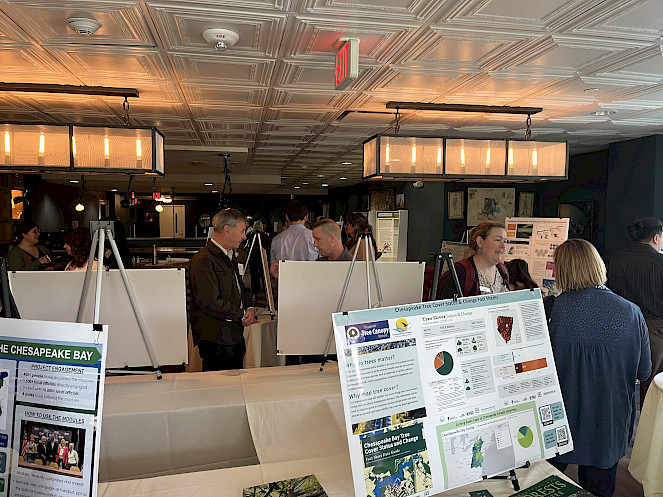
The star of the show was Carin Bisland, who is retiring soon. Carin’s heartfelt talk ‘Reflections on the past to bring us to the future’ was incredible. Carin had three themes: 1) Keep perspective, 2) Be adaptive and 3) Value relationships. In terms of keeping perspective, Carin emphasized our ability to hold two truths, a Buddhist tenet. For example, the belief of the emphasis on water quality vs. the importance of a more holistic approach to ecosystem restoration can be both held simultaneously. This reminded me of my ‘study’ vs. ‘solve’ conundrum that applied scientists often face. I draw the analogy to the right and left hemispheres of our brains that can operate independently, but are connected by the neutral connections of the corpus callosum—allowing for two truths to be held simultaneously. In talking about the valuing relationships, Carin reflected on the importance of developing long and lasting relationships with co-workers, which is something I also talked about in my presentation. Carin ended with a great metaphor. When reflecting on whether Chesapeake Bay restoration was a sprint or a marathon, she likened it to a relay race and she was handing the baton to those of us still in the race to protect and restore Chesapeake Bay. Carin received a spontaneous standing ovation.
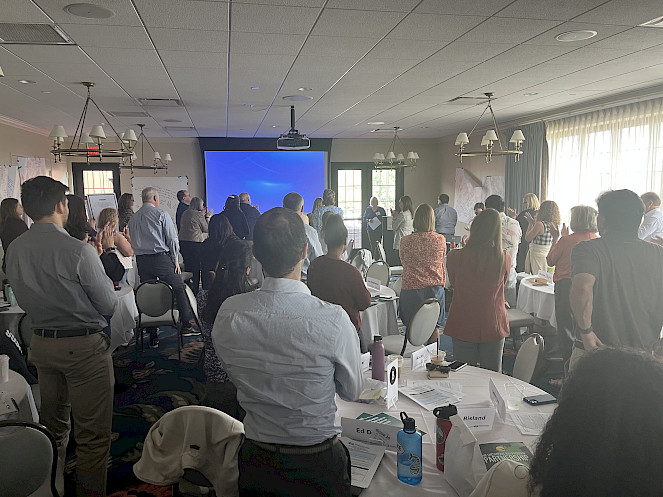
Another highlight of the meeting was the screening of ‘Eroding History’ by Rona Kobell about black communities on Deal Island who are experiencing the devastating impacts of sea level rise. The film featured environmental justice issues regarding the protection of historical and cultural resources and it stimulated robust discussions about how we better serve disadvantaged communities.
The meeting was very well planned and executed. To start with, we were given name tags that had our name, institutional affiliation and role in the CBP facing out. But we were asked to flip over the name tag, in which only our name and the CBP logo was featured, signifying that we were equal partners in a collective effort going forward.
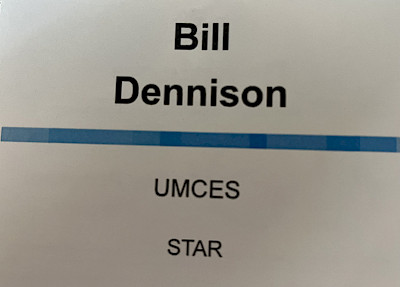
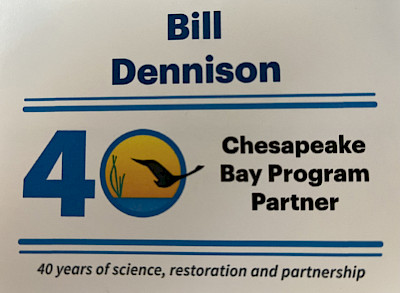
There were multiple breaks, gallery walks (poster sessions), and interactive rotating breakouts modeled after the ‘World Cafe’ approach. The main meeting room on the ninth floor had nice views with an adjacent open balcony for fresh air during breaks and lunches. We had a nice social happy hour and I joined our STAR (Science and Technical Assessment and Reporting) group for dinner at an excellent Thai restaurant. It was nice to run into Kevin DuBois, the Department of Defense Chesapeake Bay Coordinator. I had not seen Kevin since we were both at Stony Brook University over thirty years ago. I loved that the Integration and Application Network (IAN) product ‘Rising Temperatures’ was featured. IAN Science Communicator Lili Badri would have been proud.
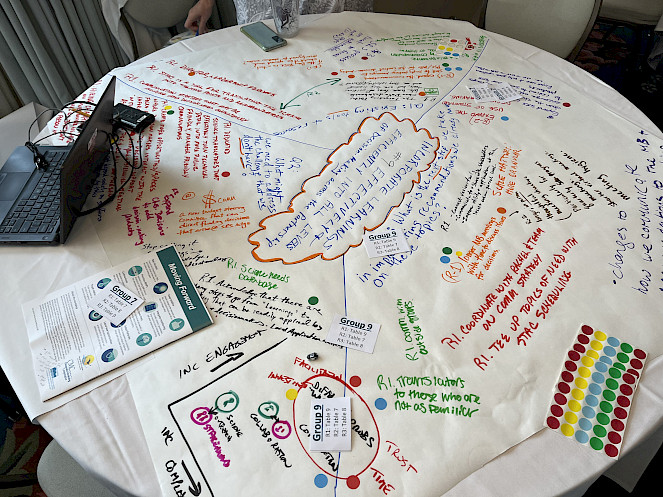
I feel that the real value of these in person meetings is what Carin was talking about — valuing relationships. Sharing experiences, finding out about each other, building a shared vision about the future of Chesapeake Bay—these are the best things about the biennial meeting.
About the author
Bill Dennison

Dr. Bill Dennison is a Professor of Marine Science and Vice President for Science Application at the University of Maryland Center for Environmental Science.

